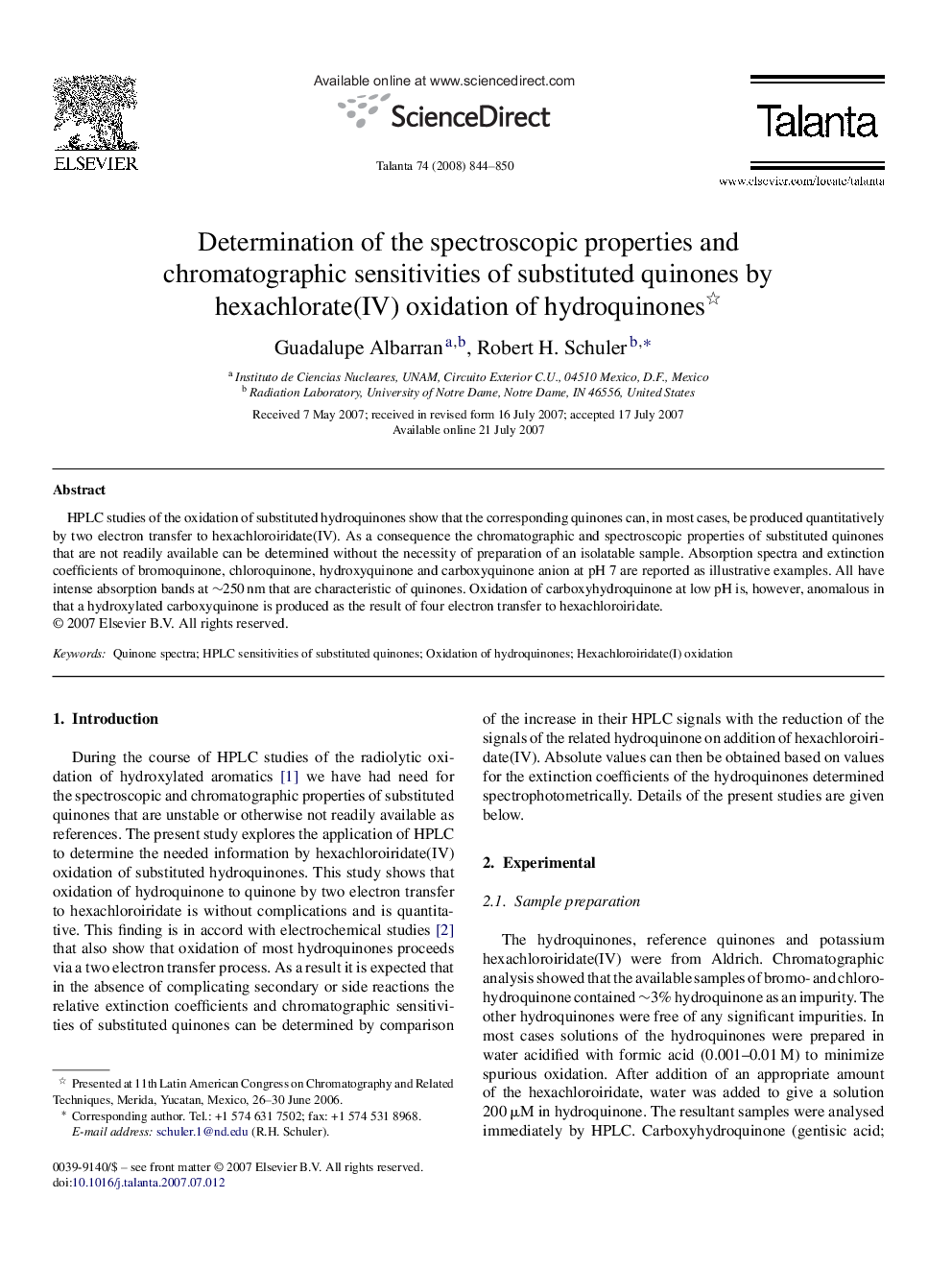| Article ID | Journal | Published Year | Pages | File Type |
|---|---|---|---|---|
| 1247126 | Talanta | 2008 | 7 Pages |
HPLC studies of the oxidation of substituted hydroquinones show that the corresponding quinones can, in most cases, be produced quantitatively by two electron transfer to hexachloroiridate(IV). As a consequence the chromatographic and spectroscopic properties of substituted quinones that are not readily available can be determined without the necessity of preparation of an isolatable sample. Absorption spectra and extinction coefficients of bromoquinone, chloroquinone, hydroxyquinone and carboxyquinone anion at pH 7 are reported as illustrative examples. All have intense absorption bands at ∼250 nm that are characteristic of quinones. Oxidation of carboxyhydroquinone at low pH is, however, anomalous in that a hydroxylated carboxyquinone is produced as the result of four electron transfer to hexachloroiridate.
